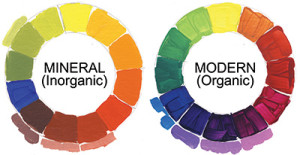
Dyes are extensively used for coloring and there are many places of their applications. Right from the colors on your t-shirts and garments to the color in your foods – dyes and pigments are significantly used. When talking of pigments, there are organic pigments and inorganic pigments available in the market. Both varieties are used in different industries and come with their own set of pros and cons.
What are pigments actually?
Pigments are nothing but organic or inorganic insoluble coloring materials. These are mainly used in the form of dispersions and remain unaffected by the surface or media on which it is applied or dispersed. There are different roles that pigments have. The most important one among them is definitely providing color on any surface or for any item. Apart from this, there are many more functions of pigments. Some of them include:
- Providing resistance against corrosion
- For obliterating any surface
- For improving surface strength
- For modifying flow properties
- For improving durability and weathering properties
Difference between organic and inorganic pigments
Lots of talks are doing the rounds regarding organic and inorganic pigments. It is evident from the names that they are different from one another. Talking chemically, in the organic variant of pigments, carbon is present in the molecular structure; while in the inorganic one carbon is not present. Along with carbon, organic variants of pigments also contain traces of sulphur and nitrogen. Phthalocyanine pigments are best examples in this regard. In case of inorganic pigments, metal cations are found in array with non-metal anions. As a result, these pigments remain insoluble in plastic as well as in other kinds of solvents. Plants and plant products are the base from which organic dyes and pigments are made. On the other hand, inorganic pigments are made from chemical and artificial components only. Organic products are safe on use; while the inorganic ones come with serious side effects and might be unsafe for use.
Different areas of application of pigments
There are different kinds of pigment preparations for both organic and inorganic variants. These are used in different kinds of applications. Some of the most important areas are as follows:
- Printing inks – The printouts that we take from printers also have colored pigments. Infact all kinds of printing inks contain pigments in some form or the other. These are inclusive of printing inks for lacquers, metal foils etc.
- Paints – Pigment paste is quite commonly used in paints of all varieties. Right from protective coating paints to decorative coating paints, pigments are used in almost all segments. Other paint applications include emulsion paints, resin and oil based paints, aqueous based paints like lime etc, distempers, automotive finishes etc.
- Textile and leather paints – Various kinds of paints are used for garment printing and leather printing. Polyesters and nylons absorb colours in the best manner and retain the same for long period of time.
Whatever be the area of application of the paints, make sure that they are of high quality.